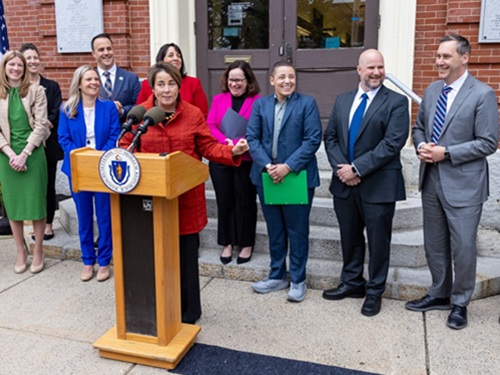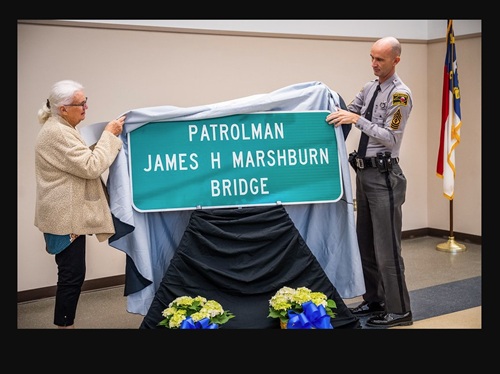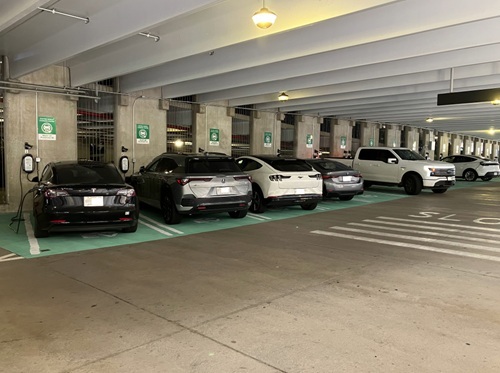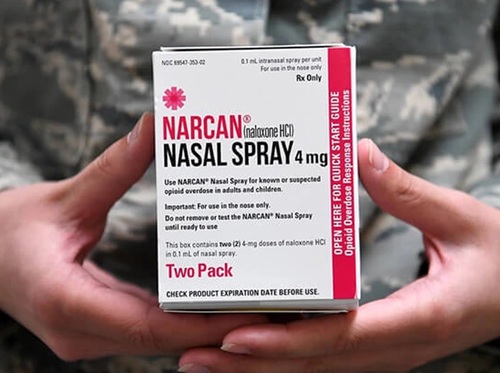The Massachusetts Department of Transportation recently launched the Naloxone Public Access Pilot Program; a new initiative aimed at addressing opioid overdoses by installing Naloxone – also known as Narcan – response stations at select agency facilities.
[Above photo by the U.S. Department of Defense]
Naloxone is a nasal spray that can be provided to someone suffering from an opioid overdose, blocking the deadly effects of opioids on the brain and restoring consciousness and breathing. It is harmless if it is given to a person not experiencing an opioid overdose.
The new MassDOT pilot program encompasses three locations: two Registry of Motor Vehicle or RMV locations in Boston and Springfield, MA, along with the ground floor of 10 Park Plaza in Boston. In addition to making Narcan available, the pilot provides training to MassDOT staff on how to recognize and respond effectively to opioid overdose incidents near these facilities.
Specifically, MassDOT said security guards at the three pilot locations have been given formal training for Narcan administration, as have RMV employees who personally volunteered to for this training as well.

This new initiative is aimed at providing life-saving tools to help protect the wellbeing of both MassDOT employees and the public alike, noted Governor Maura Healey (D) in a statement.
“We know that Naloxone saves lives. This is an important step by MassDOT to expand access to this lifesaving medication, which will enhance public health and public safety,” she added. “Our entire administration is committed to addressing the opioid epidemic, helping people suffering from substance use disorder get treatment, and saving lives.”
The opioid epidemic continues to impact communities across Massachusetts, the governor’s office noted, with more than 2,000 opioid-related overdose deaths in the state in 2023.
“Access to naloxone can help save a life in an emergency, and we are proud to launch this program to enhance safety for both our staff and the public,” said MassDOT Secretary and CEO Monica Tibbits-Nutt. “This is part of our commitment to safety and innovation [while] promoting community health with effective and sensible policies.”
“During a health emergency involving opioid usage every second counts; therefore, easy access to effective remedies such as naloxone can make the difference between life and death,” noted MassDOT Chief Safety Officer Pat Lavin. “Our Narcan pilot program is designed to provide the tools and training needed to intervene in such an emergency and, hopefully, to reduce the number of casualties from overdoses.”
MassDOT noted that other state transportation agencies have established similar overdose response locales. For example, in July 2024, the Massachusetts Bay Transportation Authority – a division of MassDOT – began the installation of cabinets to support a Public Access Naloxone Pilot on the Red Line, along with similar units at the Quincy Center, Ashmont, Andrew, South Station, and Harvard stations.
MBTA’s program is funded as part of Massachusetts’s fiscal year 2024 budget connected to the Department of Public Health’s statewide strategy of promoting harm reduction efforts and community-based harm reduction services.
Other state departments of transportation are involved in similar opioid overdose prevention efforts.
For instance, in October 2023, a new partnership between the RecoveryOhio initiative, the Ohio Department of Transportation, and the Ohio Department of Health’s Project DAWN – short for “Deaths Avoided With Naloxone” – installed Naloxone overdose treatment kits, known as “Naloxboxes,” at rest areas statewide.
That partnership put more than 130 boxes with Naloxone in 65 rest areas statewide, said Ohio DOT, which noted that the common signs and symptoms of an opioid overdose include unresponsiveness, slow or no breathing, blue lips or fingernails, choking or coughing, cold or clammy skin, small pupils, and dizziness or disorientation.
 States
States
NCDOT Project Aims to Honor Fallen State Troopers
September 12, 2025 States
States

